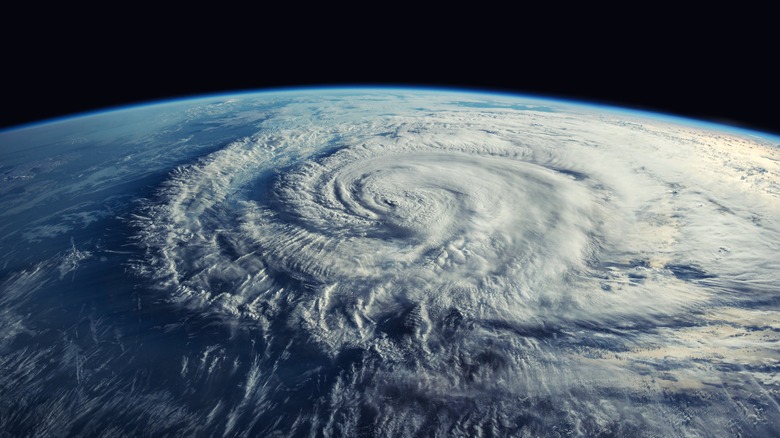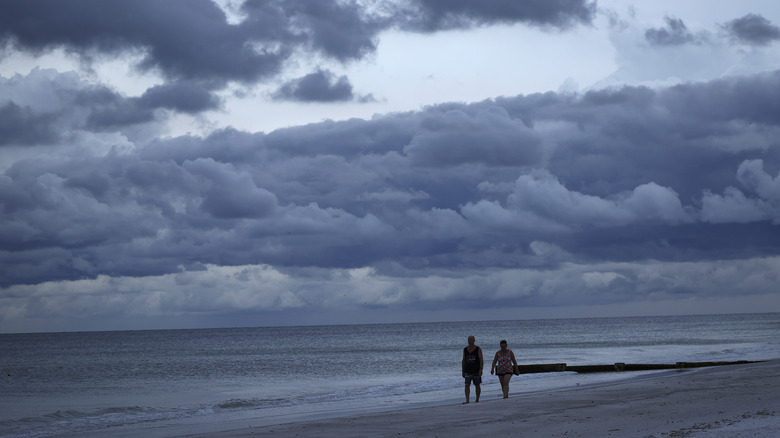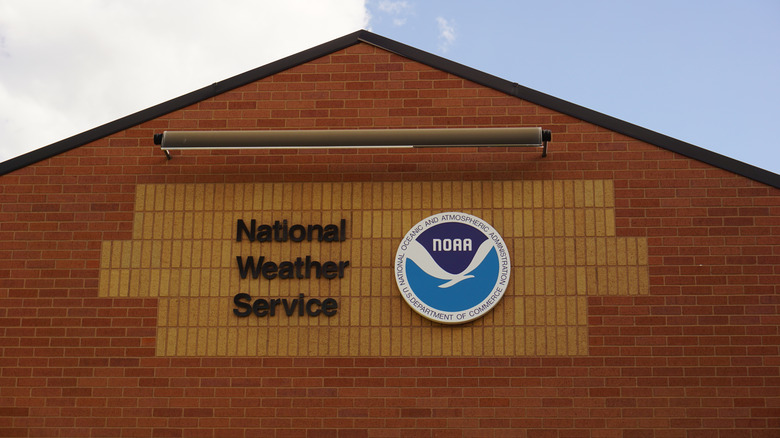Why Doesn't The 1921 Tampa Bay Hurricane Have A Name?
Hurricanes are one of the deadliest forces of nature on the planet. As the National Ocean Service explains, a hurricane is essentially a low-pressure tropical cyclone with thunderstorms. There are various definitions for different types of storms, depending on their maximum wind speed. For example, tropical depressions are storms below 39 mph, while tropical storms are designated for anything above 39 mph. Only when wind speed hits 74 mph or more do meteorologists designate it as a hurricane. Hurricanes can come from various different places, such as the Caribbean Sea, the Atlantic Ocean, North Pacific Ocean, and the Gulf of Mexico.
According to The New York Times, hurricanes can cause both numerous deaths and a tremendous amount of property damage. For example, Hurricane Katrina, which was one of the deadliest hurricanes on record (per History), had a death toll of 1,833, and also caused $180 billion in property damage. Another one of history's deadliest hurricanes happened a century ago (also per The New York Times), in October 1921 in Tampa Bay, Florida. It was the worst storm the state had ever seen. However, unlike most hurricanes today, it doesn't have a name.
The 1921 Tampa Bay hurricane was devastating
The Tampa Bay hurricane of 1921 was one of the biggest natural disasters in Florida's history. As The New York Times reports, Tampa Bay has yet to experience another hurricane like it. The 1921 hurricane had raised nearby waters by 11 feet, which destroyed a significant part of downtown Tampa, and resulted in the deaths of eight people. It had 120 mph winds and was essentially a Category 3 storm. This metric comes from the Saffir-Simpson Hurricane Wind Scale (per National Hurricane Center), which determines how dangerous an approaching hurricane will be. The scale ranges from 1 to 5, with 5 being the absolute most dangerous. A storm's category is determined by its wind speed and strength.
The 1921 Tampa Bay storm was so bad that it still remains a worst-case scenario model for forecasters in the Tampa area. At this writing, Hurricane Ian is approaching Tampa Bay, and it is expected to be one of the roughest storms that the city has ever experienced. As AP News explains, the storm might cause severe damage to the area, upending and endangering the lives of numerous people there. This has led some to worry that it might become a 1921 situation all over again.
How the hurricane naming convention works
There is one question still lingering, however: Why doesn't the 1921 Tampa Bay hurricane have its own name? The answer for this is surprisingly straightforward. As the National Ocean Service explains, there wasn't always a convenient naming convention for hurricanes. It wasn't until 1953 that this naming system existed. Before then, meteorologists used the year and order in which each hurricane occurred as a way to document them. This convention was not without its problems, however, as sometimes major confusion happened whenever multiple storms were occurring at the same time.
The naming convention that everyone knows today came about by way of the U.S. National Hurricane Center. Names are much easier to remember and communicate, which promotes greater safety during a storm (via EarthSky). Since then, the system has received some revisions, including the inclusion of male and female hurricane names in 1978. Additionally, the World Meteorological Organization, based in Geneva, now generates the lists of storm names (per USA Today). Scientists rotate between six hurricane name lists, with one list being chosen each year. Because of that, the 1921 Tampa Bay hurricane was just shy of getting its own name by around 30 years or so, making it one of the nameless, albeit significant, hurricanes in history.


